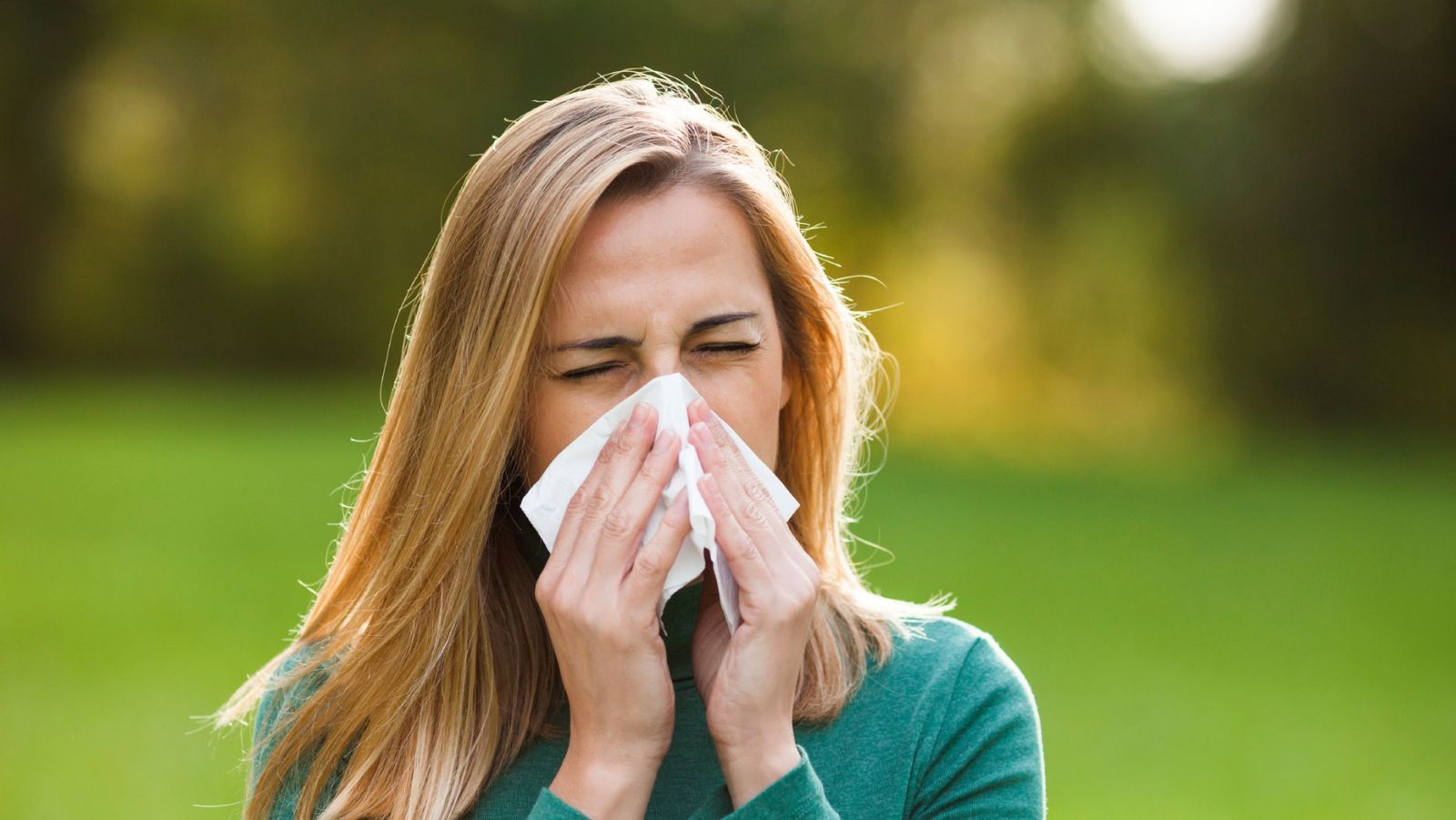Common condition
Hay Fever/Allergies
Hay fever, also known as seasonal allergic rhinitis (ri-ni-tis), is an immune system reaction to a foreign substance inside the head’s sinuses. Nearly everyone complains of an itchy, stuffy, and running nose. This is the body’s attempt to trap the potential invader in mucus in order to sneeze, cough, or swallow it (Harvard Health).
Hay fever typically occurs during spring and summer when most plants grow and spread pollen. However, people can have allergic rhinitis as a result of any material the body thinks is foreign (allergen), typically these are proteins. The body then releases histamine and other substances in order to cause allergic reactions (Hopkins Medicine).
Hay Fever/Allergies Advice
The most common causes of rhinitis are:
- Pollen given off by trees, grass, and weeds
- Dust mites
- Mold
- Cockroach waste
- Animal dander
- Fumes and odors
- Temperature
- Hormonal changes
- Certain medicines and overuse of topical nose sprays
- Smoke
- Certain foods or spices (e.g. eggs, dairy products, peanuts)
Physical Signs of Allergic Rhinitis:
- Excessive mucus in the nose
- Dark skin under the eyes
- Red-colored eyes
- A cobblestone appearance to the lining of the nose and throat
- Swollen nasal passages
- Paleness of the nasal passages
How is Allergic Rhinitis Diagnosed?
A clinician will ask an in-depth line of questioning in order to obtain a thorough medical history, followed by a physical exam. Allergic rhinitis is a diagnosis of exclusion, which means it does not require medical testing. If medical testing is needed it may involve blood work or an allergy scratch test. An allergy scratch test is a test where a physician will use a tool to apply different types of allergens to the skin in order to observe the body's reaction to them (Hopkins Medicine).
How Do You Treat Hay Fever/Allergic Rhinitis?
The first treatment recommendation for allergic rhinitis is avoiding the allergen. This, however, is not always feasible, thus medication is often necessary for relief.
Treatments for rhinitis may include:
- Avoidance
- Antihistamines
- Nose sprays
- Decongestants
- Medicines for asthma symptoms
- Allergy shots
- Avoiding triggers. Here are the steps to take for seasonal rhinitis:
- Limit your outdoor activities when pollen counts are high. Ragweed counts usually peak in early midday, grass pollen in late afternoon and early evening. If you have to do yard work during pollen season, wear an N95 mask.
- Keep your windows and doors closed as much as possible during pollen season.
- Use air conditioners instead of fans, which bring in outside air. Drive with your windows and vents closed and your air conditioner on. Consider buying an air purifier.
- Avoiding triggers. Here are the steps to take for seasonal rhinitis:
- Antihistamines. These medications work by blocking the release of histamine. Some can be used as eye drops, others by nasal spray, and lastly orally.
- Examples of antihistamines:
- Diphenhydramine
- Loratadine
- Desloratadine
- Fexofenadine
- Levoceterizine
- Ceterizine
- Promethazine
- Examples of antihistamines:
- Nasal Flushes. These medications use water or salt water to flush the nasal passages. They work by physically removing the allergens from your nasal and sinus linings. The addition of salt helps reduce the
- Nasal saline flushes
- Neti-pot
- Sinus rinsing syringes
- Steroids. These medications work by suppressing the immune response to allergens. Nasal spray formulations exist and act locally in the nose and sinuses. In some rare cases, oral steroids may be necessary to treat allergy symptoms.
- Examples of nasal sprays:
- Fluticasone
- Budesonide
- Beconase
- Pirinase
- Mometasone
- Triamcinolone
- Examples of nasal sprays:
- Decongestants. The decongestants work by constricting the small blood vessels in the nose and sinuses which results in these tissues producing less mucus. Some can be used as eye drops, others by nasal spray, and lastly orally.
- Examples of decongestants:
- Oxymetazoline
- Phenylephrine
- Pseudoephedrine
- Azelastine
- Naphazoline
- Examples of decongestants:
- EpiPen. Epinephrine is a medication used to treat anaphylaxis. Anaphylaxis is when the airways constrict and the larynx swells during a severe allergic reaction. Epinephrine, which is the medical term for adrenaline, works by restoring the airways to their open positions and reduce mucus production.
- Allergy Shots. The cure, so to speak, of allergic rhinitis/Hay fever, are allergy shots. Although not for everyone, allergy shots involve physician-directed injections of small levels of the allergen you are specifically allergic to in order to build tolerance to the allergen. This results in the body ceasing to have an allergic response to that particular allergen (Hopkins Medicine).
Frequently Asked Questions
No, we do not sell medication directly. We offer a variety of solutions via our partners. You'll be taken to their store directly when you purchase.
Additional information


